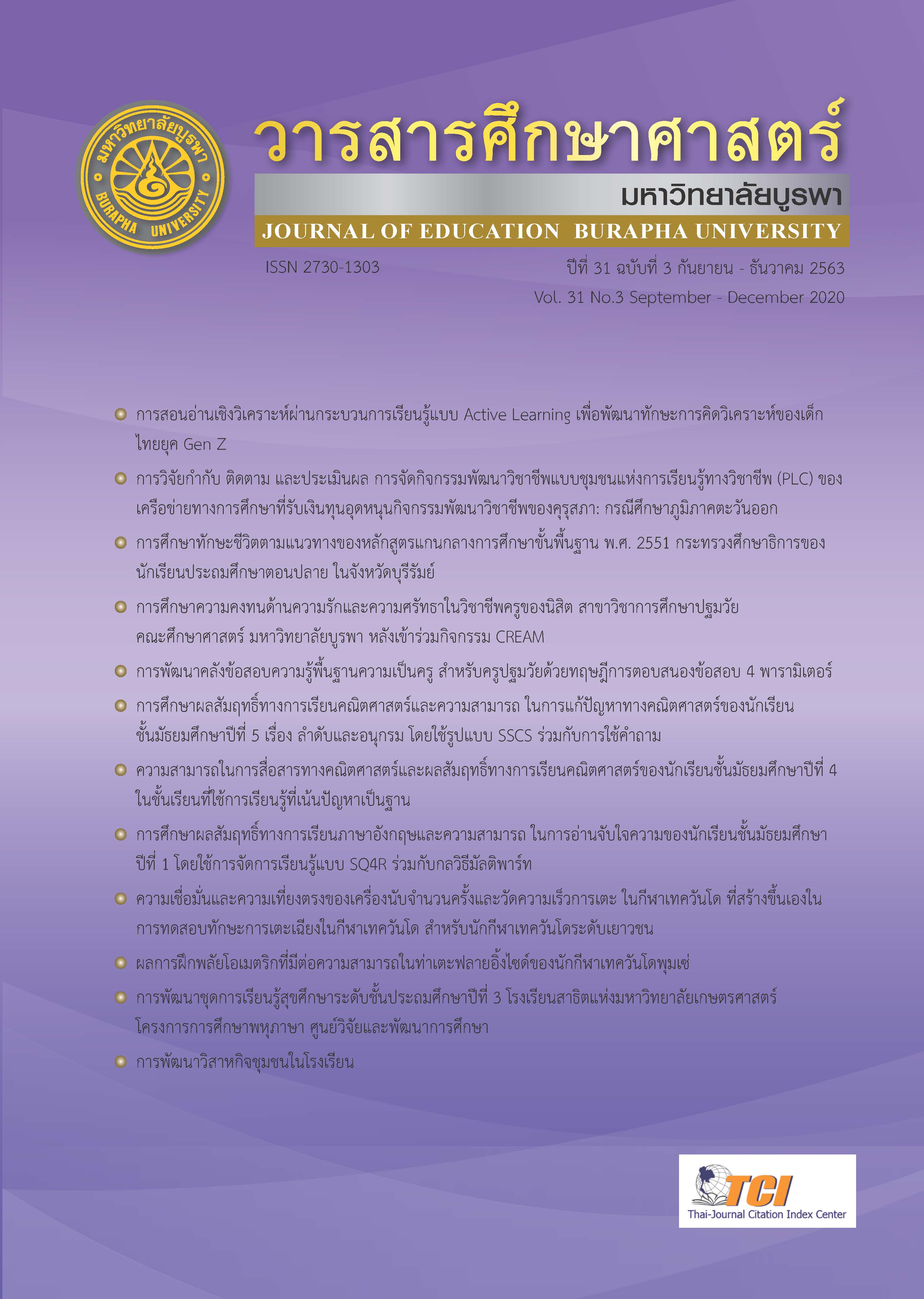Supervising, Monitoring and Evaluating the Professional learning Community. Activities Management of Networks with the Financial Support of the Teachers Council of Thailand : A case Study of Eastern Region
Keywords:
Supervising, Monitoring and Evaluating, Professional Learning CommunityAbstract
The purposes of this research were to assess the promotion and support for educational professionals to form a network with PLC, to assess competency and quality development of learners and teachers through the PLC process, to assess cooperation academic and professional partnership between higher education institutions in the area and educational agencies with the Teachers Council of Thailand and To assess the knowledge generated by the PLC process. Research summary: Teaching innovation, which is a result of PLC operations, found that the majority of teaching innovation is Brain Based Learning (61.2%). The result which the learners have is the most cognitive development (44.09%). Achieving most of the teaching objectives at a good level (77.96%). The number of teachers, most network members 0-5 Teachers (60.0%). The number of students in each group is mostly between 21 - 50 (66.77%). And found that most PLC hours are between 51-75 hours (81.79%). The relationship between the type of teaching innovation applied. With the achievement or other results of the students. By testing the Chi-square value, it was found that the type of teaching innovation correlated with student achievement with statistical significance at the level of 0.001. The correlation study using the rxy formula showed that the number of PLC hours had a relationship with the teaching experience in a positive with a statistical significance at the level of .05. The number of students in the network group is related to the number of hours. Benefits of PLC and negative evaluation results with statistical significance at the level of 0.01. The number of PLC hours is positively correlated with the benefits from the PLC and the overall assessment results. And the benefits are related to the overall assessment results in a positive with statistical significance at the level of 0.05.
References
เครือศรี วิเศษสุวรรณภูมิ, ชุมศักดิ์ อินทรรักษ และอนุศักดิ์ ตั้งปณิธานวัฒน. (2556). การส่งเสริมและพัฒนานวัตกรรมเครือขายการเรียนรูของครูและบุคลากรทางการศึกษาเพื่อพัฒนาคุณภาพผู้เรียนในสามจังหวัดชายแดนภาคใต้. วารสารปาริชาต, 25(2), 81-90.
ปิยณัฐ กุสุมาลย์ และภมรพรรณ์ ยุระยาตร์. (2560). แนวทางการพัฒนาครูโดยใชแนวคิดชุมชนแห่งการเรียนรู้ทางวิชาชีพในการจัดการเรียนรู้ สําหรับสถานศึกษา สังกัดสํานักงานเขตพื้นที่การศึกษามัธยมศึกษาเขต 27. วารสารการบริหารและนิเทศการศึกษา มหาวิทยาลัยมหาสารคาม, 8(1), 196-206.
พงศ์เทพ จิระโร. (2555). การวิจัยทางการศึกษา. ชลบุรี: ภาควิชาวิจัยและจิตวิทยาประยุกต์ คณะศึกษาศาสตร์ มหาวิทยาลัยบูรพา. เอกสารการสอน.
วรลักษณ์ ชูกําเนิด และเอกรินทร์ สังข์ทอง. (2557). โรงเรียนแห่งชุมชนการเรียนรูทางวิชาชีพครู เพื่อการพัฒนาวิชาชีพครูที่เนนผูเรียนเปนหัวใจสําคัญ. วารสารวิทยบริการมหาวิทยาลัยสงขลานครินทร์, 25(1), 1-10.
Harris, A. (2003). Teacher Leadership as Distributed Leadership. School Leadership and Management Vol. 23 No.3 (2003): 313-324.
Hord, S.M..(2003). Professional learning communities: Communities of continuous inquiry and improvement. 2nd edtion.: Washington DC: Southwest Educational Development Laboratory. Office of Educational Research and Improvement.
Hord, S.M. (2010). Professional learning communities : Communities of inquiry and improvement. Austin : Southwest Educational Development
Laboratory. journal.oas.psu.ac.th/index.php/asj/article/viewFile/125/688
Hord, S.M., Roussin J, L., & Sommers, W.A. (2010). Guiding professional learning communities: inspiration, challenge, surprise, and meaning. Corwin Press.
Downloads
Published
Issue
Section
License
บทความทุกบทความเป็นลิขสิทธิ์ของวารสารศึกษาศาสตร์ มหาวิทยาลัยบูรพา


